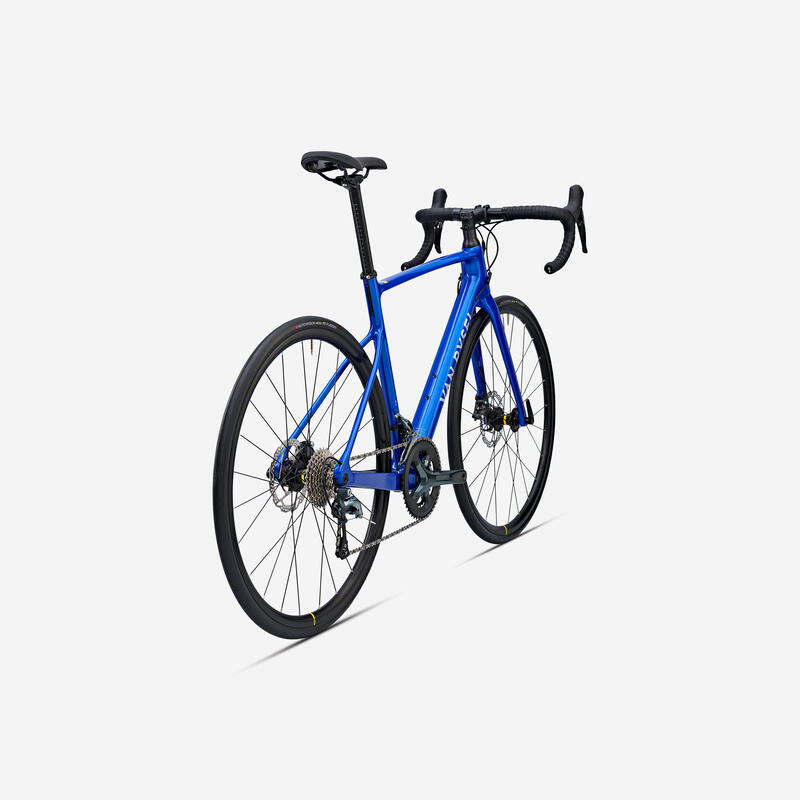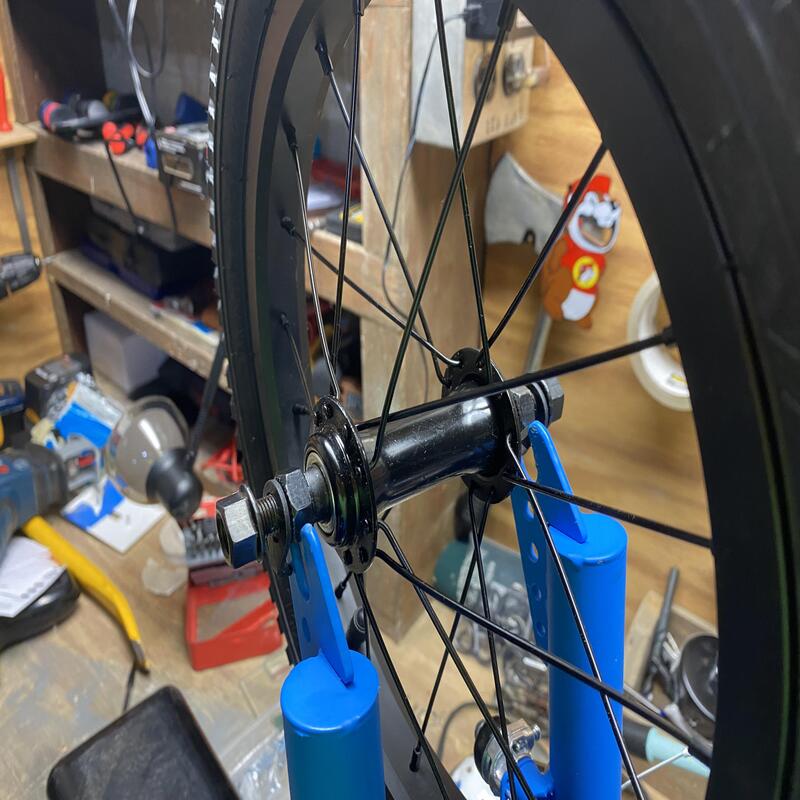Bicycles, as we know them today, have evolved significantly over the years. One essential element often overlooked is the thin rod in the bicycle wheel. The rod plays a crucial role in various aspects of bicycle mechanics. Understanding its function will deepen our understanding of bicycle design and efficiency.
Understanding the Composition of Bicycle Wheels
Bicycle wheels are composed of numerous elements. The thin rod acts as a pivotal connector between parts of the wheel. This rod typically forms part of the spokes or the axle assembly. Therefore, each component contributes to the overall performance of the wheel.
Spokes and Their Significance
The spokes of a bicycle wheel are vital for structural integrity. They connect the rim to the hub, ensuring the wheel maintains its shape. When a rider pedals, forces act upon the spokes, transferring power to the ground. This allows for effective propulsion while balancing the cyclist’s weight.
In addition, these spokes are designed to be lightweight yet strong. The thin rod provides the necessary tensile strength to support the wheel. When a thin rod is used, it reduces the overall weight of the bike. Furthermore, this reduction in weight enhances maneuverability, which is crucial for racing and stunts.
The Importance of the Hub
The hub is at the center of the wheel. It houses the axle and often spins with the wheel. In this context, the thin rod plays a significant role in connecting the spokes to the hub. This connection allows the spokes to form a rigid structure, preventing flex and deformation.
Moreover, the hub is also responsible for accommodating the bike’s gearing system. A well-designed hub can maximize efficiency during rides. The thin rod that integrates with the hub ensures smooth rotation, vital for performance cycling. Therefore, its design and integrity profoundly affect the wheel’s overall stability.

The Impact of a Thin Rod on Performance
The kind of materials used for the thin rod directly influences performance. High-quality materials reduce inertial forces and enhance responsiveness. Riders benefit from improved control and speed, crucial during competitive scenarios. Thus, the choice of manufacturing materials should not be underestimated.
Material Choices and Their Effects
Various materials are used for thin rods, each with unique properties. Aluminum is lightweight yet strong, commonly employed in bicycle manufacturing. Conversely, carbon fiber offers even less weight with excellent stiffness. Each material presents different trade-offs in cost, durability, and weight.
Additionally, steel rods provide robust durability but may add unwanted weight. Cyclists who prioritize stability might prefer a steel rod. However, for those who seek speed and agility, aluminum or carbon fiber is preferable. Ultimately, the choice of material significantly affects the bike’s overall performance.
Weight Distribution and Stability
Weight distribution is crucial for bicycle handling. A well-placed thin rod can maintain the optimal center of gravity. Properly balanced weight enables smoother rides and better cornering abilities. This enhances rider confidence while navigating various terrains.
Furthermore, a thin rod allows for efficient energy transfer from the rider’s legs to the wheels. When weight is balanced, less energy is lost to unnecessary movement. Consequently, this maximizes propulsion and reduces fatigue for the rider. As a result, the rider can perform at their best during prolonged rides.

Engineering Challenges and Considerations
Designing a bicycle wheel with a thin rod is not without challenges. Engineers must consider several factors to ensure optimal performance. They need to balance weight, strength, and functionality without compromising safety.
Durability Versus Weight
Finding the right balance between durability and weight is a common engineering dilemma. A lightweight rod improves speed but may sacrifice longevity. Conversely, a heavier rod could offer enhanced durability but negatively impact performance. Engineers must understand the needs of cyclists to arrive at an optimal solution.
Moreover, consumer preferences vary. Competitive cyclists demand lightweight and swift designs. Casual riders often prioritize comfort and durability. Thus, engineers need to create versatile solutions to satisfy different market segments.
Aerodynamic Factors
Aerodynamics also plays a significant role in bicycle design. A thin rod can enhance the aerodynamic profile of the wheel. By reducing drag, the cyclist can maintain higher speeds with less effort. Consequently, engineers often experiment with shapes and materials to improve this aspect.
In addition, the positioning of the thin rod in relation to other components can affect airflow. Well-placed components can create an efficient airflow pattern. This allows cyclists to cut through air resistance more effectively. Therefore, the engineering of a bicycle wheel requires an integrated approach that considers all elements.
Maintenance and Care of Bicycle Wheels
Proper maintenance of bicycle wheels is essential for longevity and performance. A thin rod, like any mechanical component, requires attention. Regular inspection ensures that the rod and associated parts remain in optimal condition.
Regular Inspections
Inspecting the thin rod and spokes should be a routine endeavor. Riders should check for any signs of wear or damage. Visual inspections can reveal cracks or bending that may compromise safety. If issues are detected, timely repairs are crucial.
Moreover, checking the tension of spokes is vital for handling. Unevenly tensioned spokes can lead to an unstable wheel. A well-tensioned wheel ensures better control and responsiveness during rides. Therefore, cyclists should invest time in these inspections for safety and enhanced performance.
Cleaning and Lubrication
Cleaning the bicycle wheel can help maintain its functionality. Dirt and grime accumulation can impact performance. A clean wheel reduces friction, enabling smoother rides. Additionally, regular lubrication of components, such as the axle, maintains smooth rotations.
Cyclists should use appropriate cleaning agents to avoid damaging surfaces. Furthermore, lubricants should be compatible with materials used in the wheel. This prevents wear and tear while prolonging the life of the thin rod and other components. Proper care enhances both safety and performance.

The Future of Bicycle Wheel Technology
With advancements in technology, bicycle wheel design continues to evolve. Engineers are constantly researching ways to enhance performance. Innovations in materials and design will redefine the role of the thin rod in the wheel.
Material Innovations
New technologies are allowing the creation of stronger, lighter materials. For instance, advancements in composites could lead to even lighter thin rods. These innovations will enhance performance and durability while benefiting a wide range of cyclists.
Additionally, research into smart materials may offer improvements in flexibility and resilience. Such materials could adapt to various riding conditions. This would enable better performance across diverse terrains, further enriching the cycling experience.
Smart Technology Integration
The integration of smart technology into bicycle wheels is another frontier. These systems can monitor performance metrics in real time. Data on speed, distance, and pressure can be relayed to the rider for informed decision-making.
Moreover, intelligent systems can alert cyclists to potential issues. For example, an alert system may notify the rider of decreased rod integrity. Such advancements could significantly increase safety and performance. As technology advances, the thin rod will evolve, becoming an even more integral part of bike dynamics.
Experiencing the Benefits of a Thin Rod Bicycle Wheel
Cyclists can experience numerous benefits when using bicycles equipped with thin rods. These benefits range from improved efficiency to enhanced performance during rides. As more people adopt cycling as a primary form of transportation, these benefits become increasingly essential.
Enhanced Performance and Speed
Bicycles with a well-engineered thin rod wheel design yield remarkable speed. The lightweight nature contributes to quick acceleration. Moreover, bikes can maintain speed effortlessly, providing benefits during races or long rides. This enhances the experience for cyclists seeking performance.
Furthermore, properly designed wheels enable better cornering. The stability provided by a thin rod aids handling during turns. Riders often notice significant improvements in confidence and maneuverability. Thus, a well-designed thin rod bicycle wheel truly transforms the riding experience.
Eco-Friendly Transportation
In an era focused on sustainability, bicycles play a crucial role. With more individuals opting for cycling, the environmental impact is reduced. A thin rod wheel enhances the eco-friendliness of this mode of transportation due to its lightweight design.
As bicycles become more efficient, fewer resources are consumed during manufacturing and transport. This reduction helps minimize the carbon footprint associated with cycling. Thus, using bicycles equipped with advanced wheels contributes positively to addressing environmental concerns.
Conclusion
The significance of a thin rod in bicycle wheel design cannot be overstated. Its role is pivotal to performance, stability, and manufacturers’ innovative designs. Cyclists, engineers, and manufacturers alike can benefit from a deeper understanding of this component.
As technology continues to advance, the implications for bicycle design will be profound. With improving materials and emerging technologies, the future looks bright. Ultimately, the thin rod will remain a key player in shaping the cycling experience for generations to come. Thus, it is crucial to appreciate its importance within the larger context of bicycle mechanics and design.


